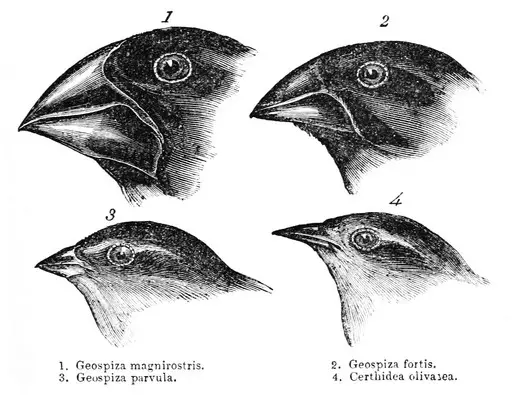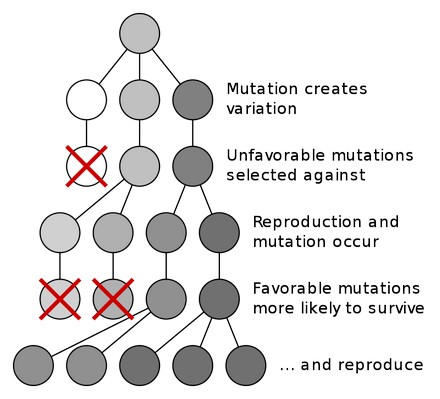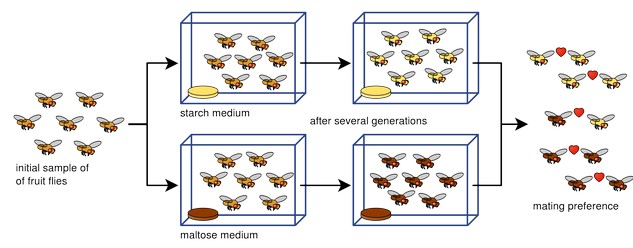Evolution Explained
The sheer diversity of organisms on this planet of ours has baffled the minds of great thinkers and scientists for centuries. Although they contrast heavily from each other, various species tend to share a similar basic body plan – this perfect blend of similarity and variance is awe-inspiring. One feline being, the domestic cat, is docile enough to sit on your lap while its close relatives, the big cats, can kill you in an instant.
The idea that species change over time, or organic evolution, was not formally adopted until very recently. It was conceived, however, in its modern form in the mid-nineteenth century, by two men: Alfred Russel Wallace and Charles Darwin. “What is evolution?” – You might ask; this article is intended to answer just that.
DNA & Variance
Organic life first appeared on Earth, some billions of years ago. Life is so ancient that there is no wonder where all of this diversity comes from. One special molecule makes life possible and ensures the transmission of an organism’s data to its subsequent generations: the Deoxyribonucleic acid, shortened as DNA.
DNA houses all information associated with the life of an organism, i.e. its height, color, body form, blood type, weight, intellect, and everything else. It is a peculiar molecule in two ways:
- It can replicate itself with the assistance of special proteins.
- It can mutate or get changed either before or during this replication process.
All of our cells (the basic components that build up our body) contain DNA. In the vast majority of living beings (except for those who just split into two), this DNA is inherited in halves from both of their parents. This means that the DNA of an organism is essentially a hybrid of its parent’s DNA and is capable of changing on its own as well.
This brings us to the first step in evolution: variance (or descent with modification) – over generations, organisms are bound to become different in appearance and otherwise from their “primitive” ancestors.
Not all Variants are Created Equally
While traversing through the Malayan archipelago and the Galapagos Islands, in 1858, Wallace and Darwin, although miles apart, simultaneously stumbled upon the idea. They proposed that populations are chiseled into perfection as a result of environmental stresses. When DNA plays around with its genetic code, there are bound to be breakthroughs and failures. The environment simply takes its pick.

The difference created by these mutations is meager at first. But behind the curtains, DNA plays a risky gamble – everything or nothing – generation after generation, these small changes pile up and become explicit. Both men noticed this while voyaging through these far-off waters and formulated their theory: only the “best adapted to survive” prevails, the rest perish – this is the theory of Natural Selection.
The second step of evolution is the selection of variants by nature or “Natural Selection”.

In nature, different is not always good. Different varieties present within a single population or separate populations will have different abilities and disabilities. For instance, a light-colored moth will easily blend among light shaded trees but will have to struggle a great deal to preserve its life amidst dark shaded trees. The variants may not be weak, but what matters is if they are compatible with their surroundings or not.
Natural is Selective – Only the Best Fit Will Survive
Procreation and survival of progeny are what assures the continuation of an organism’s genetic lineage – the survival of its variant of stock DNA. In many cases, nothing but simple chance can ensure the propagation or destruction of a variety. Being in the right place and at the right time is key for survival.
The prevailing environmental challenges must be overcome by a variety to excel in that environment. Those who are incapable of doing so will be chipped off either abruptly or gradually. Well adapted organisms on the other hand will continue to flourish and reproduce effectively. Their subsequent generations too will have to pass the same test and only those who succeed will be allowed to continue their ancestor’s legacy. Eventually, the population will be dominated by the better-adapted variant; it would have “evolved”.
Another challenge that organisms must confront is the ever-changing environment. It is the harder of the two ordeals, as it is difficult to keep up the pace with sudden changes. The Sahara Desert, for instance, is today a barren stretch of sand but it once was a lush green grassland, not long ago. An abrupt climatic change was responsible for its current form. Scores of species vanished in the process and only the most versatile populations survived this change by changing themselves.
Evolution Knows No Bounds – Rise of New Species
How much do you resemble your parents? Grandparents? Great-grandparents? Consider this, if you were to meet in person with your ancestor, who lived some thousands of generations before you, would you recognize them? The answer will be definitely no.
Variance, as noted earlier tends to magnify as generations pass, and there comes a time when variance leads to speciation. Speciation is the point in any population’s history where it splits into two populations belonging to two different species. This essentially happens when the surviving variants belonging to the same stock become so different from each other that they no longer bear any resemblance.
Species can simply be defined as specific inter-breeding groups. Naturally, organisms tend to breed with similar organisms; variation, if left unchecked, leads to reproductive isolation. Those reproductively isolated groups become separate species.
If a population was to be divided and each subpopulation be exposed to different environmental pressures, different types of variations would prevail. If these populations remain isolated for a prolonged period without any corridor between the two, they will become more and more different. These differences will pile up and convert them into separate species.

How Does Evolution Progress?
One general rule of the thumb with evolution is “if it isn’t broken, don’t fix it”. Evolutionary pressures only force sub-par variants to either adapt or die. But those who are already well suited to their environment will not be forced to change. This is exactly why some species have shown great change over brief periods of geological time (some million years) while others have remained largely, but not entirely, unchanged.
In the end, it all comes down to the challenges that the environment poses to its inhabitants. Since the environment tends to change rapidly and dramatically — as it has in the past, these pressures persist. This process started around 4 billion years ago when the first cell came into being and continues to this day – species race on to secure their seats in the next epoch as nature decides to take its pick.
- Comment
- Posted by Syed Muhammad Khan